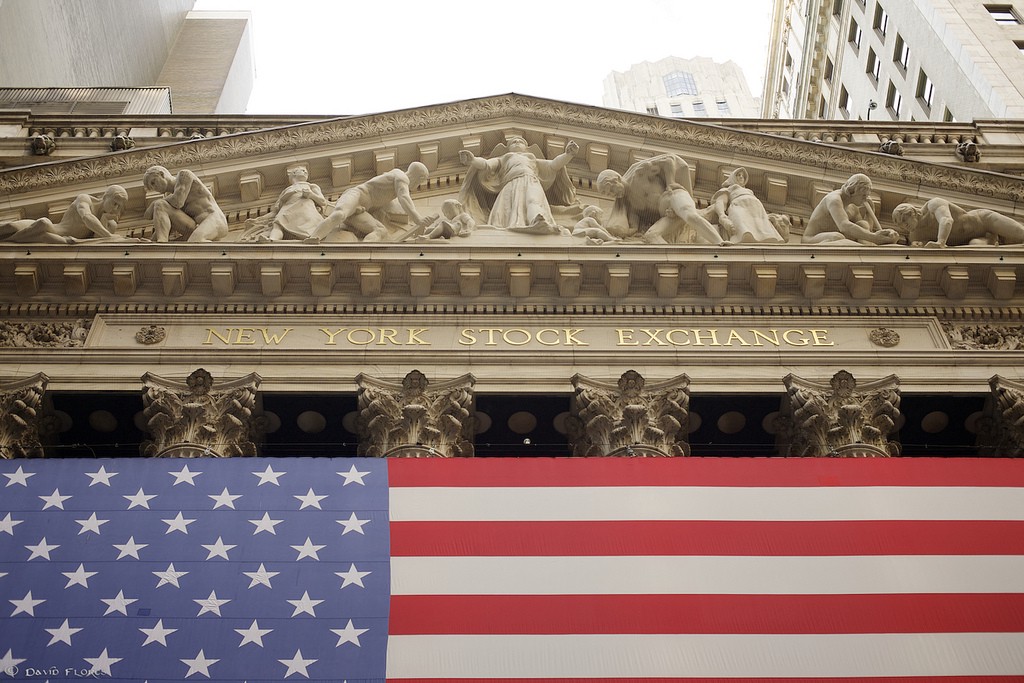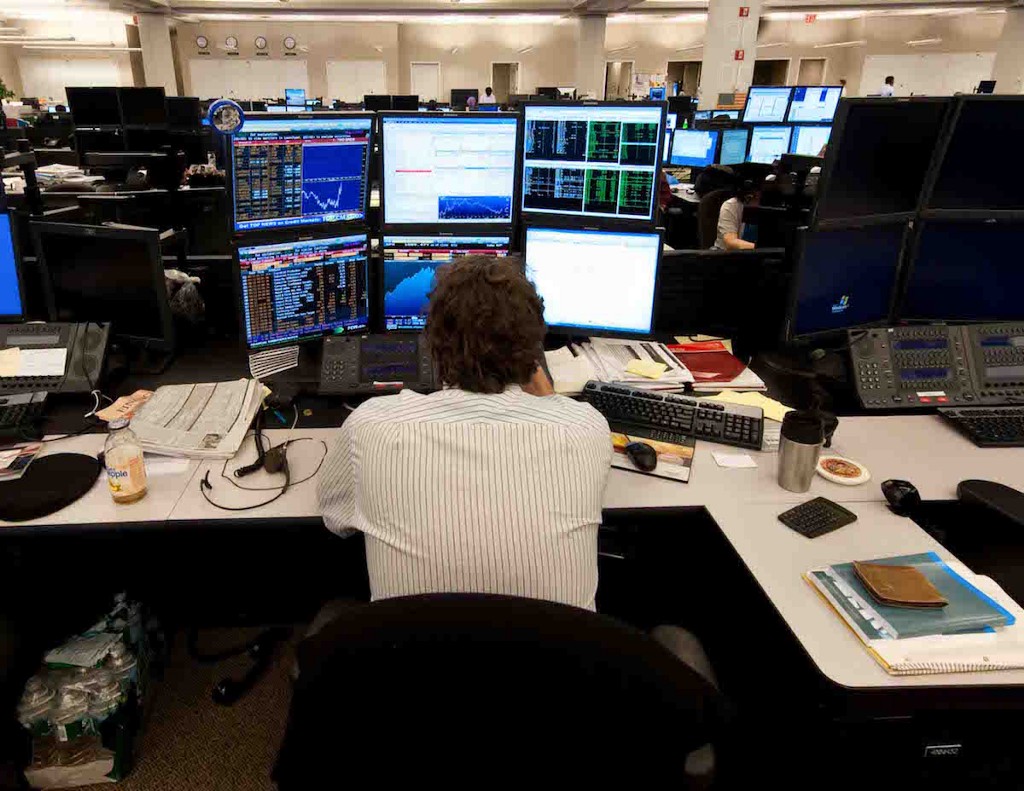When Wall Street and Washington Got in Bed Together
Being part of that political establishment means being supported by, and supporting, the Wall Street establishment.

My first evening of my first Wall Street business trip was spent in a Brazilian brothel. I was with a salesman from my firm who was entertaining his clients. I was brought there unexpectedly, and told to talk about markets when things got slow. Buying women for clients and then expensing it as a 10-bottle dinner wasn’t every salesperson’s thing, but in certain countries, with certain clients, it was pretty common on Wall Street. It also worked; the clients ended up buying a lot of bonds from us.
The next morning I expressed my surprise to a senior trader. He laughed, “You think that’s bad? Did you look at the other guys around you? Did you see the Brazilian bankers entertaining politicians? That is the way it works here. Bankers buy the politicians.”
That was in Brazil in the ’90s. On Wall Street outright corruption, like buying escorts for politicians, is exceedingly rare. The far more common, lucrative, and nuanced method of influencing politicians is to offer them high-paying jobs — or pay them for speeches.
It’s such an ingrained part of the political culture that Hillary Clinton’s speeches to banks after leaving the State Department, which earned her $2.9 million, isn’t odd. She did it because everyone in the political establishment does it. She doesn’t see it as wrong, because being part of that political establishment means being supported by, and supporting, the Wall Street establishment.

Wall Street has always hired former government officials, mostly Republicans, and mostly for show. The jobs were ceremonial, used to wow clients and provide a firm a sheen of importance. Bill Clinton’s first administration dramatically changed the practice, when as part of New Democrats rebranding, and to ride the popular support generated by Reagan, he pivoted towards Wall Street, embracing free trades and free markets. Wall Street was being deregulated, and rules of the game being rewritten, and so value of connections became all the higher. With both parties now aligned with bankers, prior checks on the process started dissolving.
With both parties behind it, Wall Street fully embraced the political class. The embrace was mutual. Bankers also started going to work in D.C., taking central roles in writing banking regulations. It turned into a personally profitable merging of interest, with D.C. favoring Wall Street, and Wall Street rewarding D.C..
The model for the new “revolving door” was Robert Rubin, the CEO of Goldman Sachs. Determined to show Wall Street that he was a different type of Democrat, Bill Clinton hired Rubin as his second Treasury Secretary.
Rubin’s four years in the administration were very good to Wall Street; the regulatory environment, with his support, swung aggressively in their favor, punctuated by the repeal of Glass-Steagall. Rubin left the administration to go back to a booming Wall Street, taking a high paying job at Citigroup, whose expansion to the world’s largest financial company was made possible by the repeal of Glass-Steagall. It was, even by Wall Street’s standards, an audacious move.
I worked at Citibank, and what Rubin was hired to do, and what he ended up doing, was unclear to me and to many others. He was initially hired as board member and given a “strategic managerial and operational” role. For the next 10 years, he continued to gain titles and roles, each more nebulous, before becoming the “Chairman of Citigroup.”

During those years, few on the New York trading floor I worked on ever saw him. We did hear from him now and then, since he called traders to ask how markets were doing. Who he called was always changing, and esoteric for such a senior banker. When a junior trader was asked why Rubin called him to talk about one obscure bond, he suggested, “I think it was for his own investing. For his PA [his personal account].”
During Rubin’s tenure, Citigroup, freed from oversight, tripled in size, before collapsing into insolvency, helping to spark the financial crisis. That is when his role came into focus. Citigroup and the rest of Wall Street were bailed out by his friend, and former Goldman CEO, Hank Paulson, who was Bush’s Treasury Secretary. Rubin resigned a year later, with a compensation package estimated to be around $126 million dollars.
Rubin was the highest profile case of the social and economic merging of D.C. and Wall Street, that with both political parties playing along, and nobody to cry foul, morphed from a mutual hug, into an outright mind-meld. Wall Street filled with former government officials, from low-level bureaucrats to senior cabinet members. It became so common, that on the trading floor, when news hit of a politician retiring or losing, side bets would be placed on which firm they would end up at.
Meanwhile, the government, especially the all-important banking regulatory roles, filled with former bankers. It become impossible to untangle who worked for whom, and whose interest, other than everyone’s personal bank account, was being fought for.
Rubin’s replacement at the Treasury, Larry Summers, also did the round trip. He left D.C. in ’01, with the wealth of an academic. When he returned to work for the Obama administration in ’09, his wealth had surged to that of a very successful banker, thanks to lucrative speeches to banks, and consulting hedge funds.
The mind meld increased during the Bush administration, and wasn’t just limited to those in the White House. Alan Greenspan, only months after being Federal Reserve Chairman, gave a speech to Lehman (and clients) for $250,000. The practice continued during the Obama administration. Tim Geithner, who oversaw much of the Wall Street bail-out, soon after leaving office, also gave expensive speeches, then took a very well paying job at a private equity firm, Warburg Pincus. The current Treasury Secretary, Jack Lew, is himself a former senior banker from, yes, Citibank.

Speaking fees are just another form of the mind meld, with Wall Street paying former government officials for invitation-only talks. I have been to some of them (not Clinton’s), and from an investor’s perspective they are entirely useless. No market information is given that cannot be gotten from a careful reading of public speeches.
But that isn’t what they are about: They are another incremental nudge to align bankers’ and politicians’ interests. Wall Street gets to remind politicians that there is always a well-paying job waiting for them if they play the game their way, and the politician gets to remind the audience that they know how the game is played.
The details of Hillary Clinton’s speeches are unclear; she hasn’t released the transcripts, nor does she sound very excited about doing so. Yet if the reports soon after her talks are to be believed, that is exactly what she used them for. Here’s Politico, soon after her speech to Goldman Sachs:
“What the bankers heard her to say was just what they would hope for from a prospective presidential candidate: Beating up the finance industry isn’t going to improve the economy — it needs to stop.”
“Striking a soothing note on the global financial crisis, she told the audience, in effect: We all got into this mess together, and we’re all going to have to work together to get out of it.”
(Emphasis, mine.)
Indeed. The politicians and Wall Street did get us into this mess together. But for them it has been a very profitable mess. For everyone else? Not so much.
Chris Arnade received his Ph.D. in physics from Johns Hopkins University in 1992. He spent the next 20 years working as a trader on Wall Street. He left trading in 2012 to focus on photography. His “Faces of Addiction” series explores addiction in the south Bronx neighborhood in New York City. Follow him on Twitter: @Chris_arnade
Support The Billfold
The Billfold continues to exist thanks to support from our readers. Help us continue to do our work by making a monthly pledge on Patreon or a one-time-only contribution through PayPal.
Comments